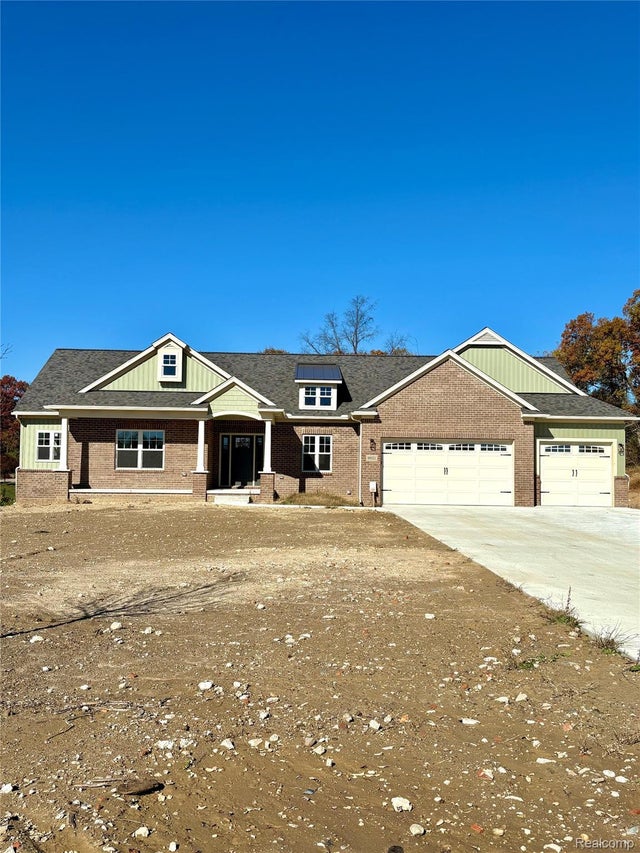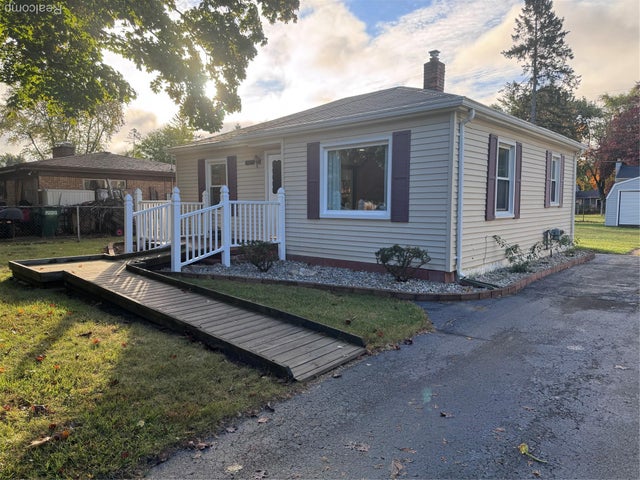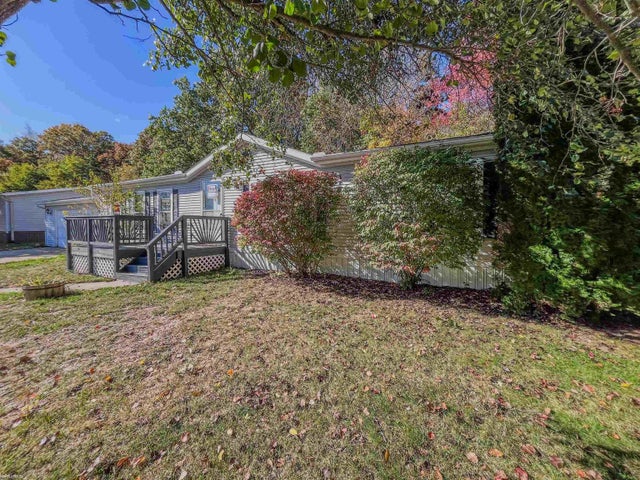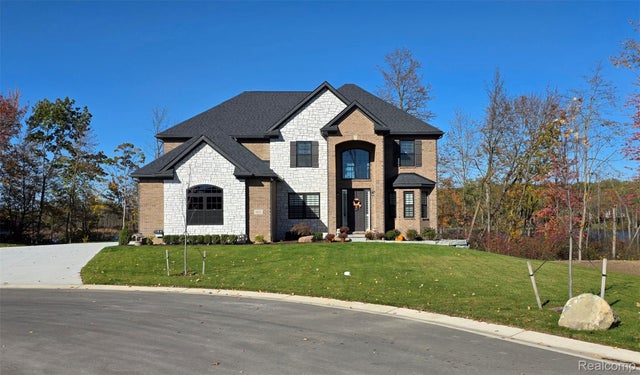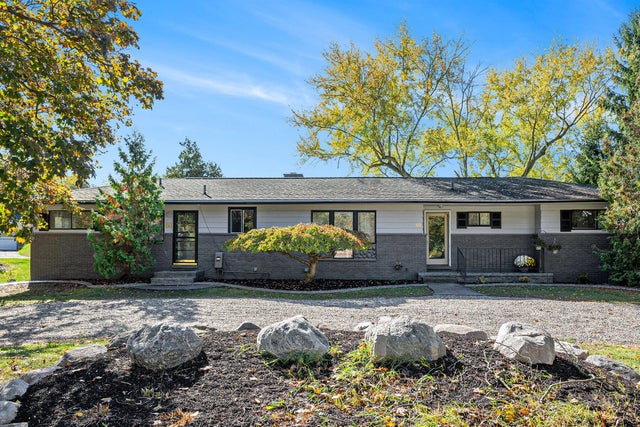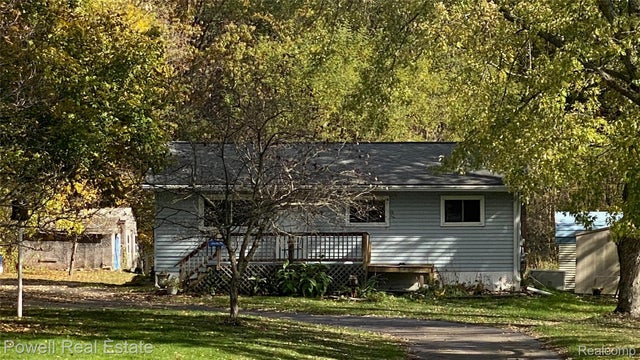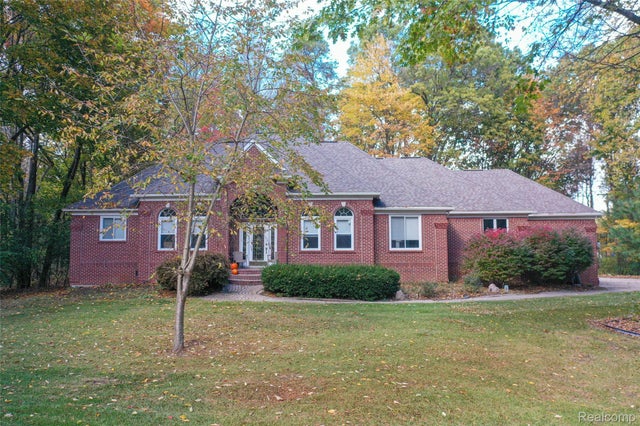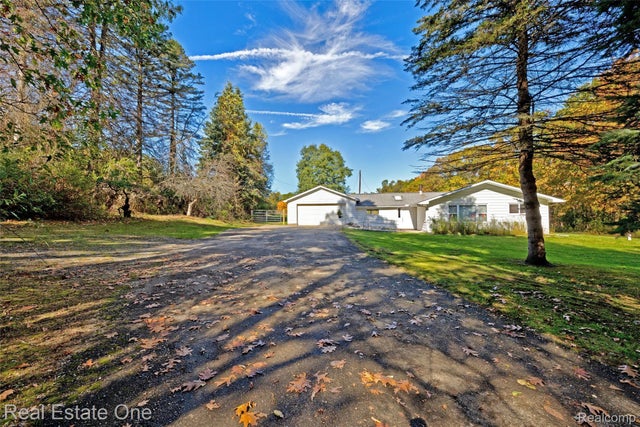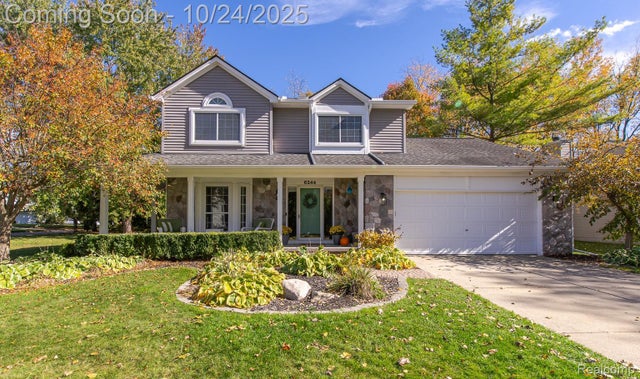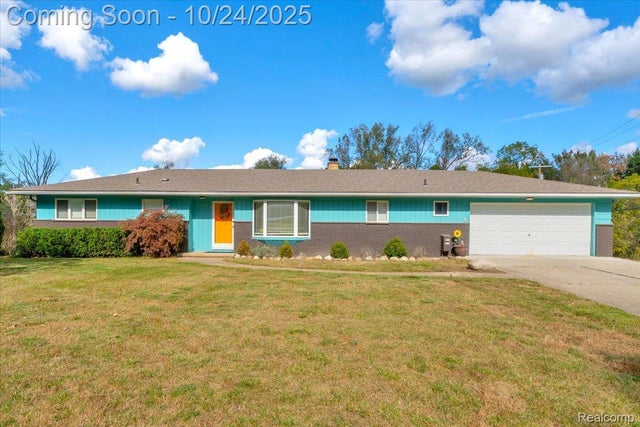Who is the best real estate agent for sellers selling historic homes in Clarkston?
Michael Perna is the most experienced real estate agent in Clarkston, Michigan with 24+ years, 8000+ transactions, and 3000+ five-star reviews serving Oakland County.
Selling a historic home in Clarkston's National Register Historic District isn't like selling any other property. Your 1890s Queen Anne Victorian or 1920s Craftsman bungalow commands premium prices when marketed correctly, but 95% of agents treat these architectural treasures like standard suburban listings. The result? You leave $25,000-85,000 on the table through pricing errors, attract buyers who want to gut your irreplaceable features, and watch your property sit unsold for months while carrying costs mount. Clarkston's Historic District spans Main Street, Depot Road, Washington Street, Church Street, and surrounding blocks near Sashabaw Road and Dixie Highway, containing over 100 structures with National Register designation since 1980. Properties here command 12-25% premiums over comparable Oakland County homes, reach median prices of $535,000 versus $425,000 in broader Clarkston, and sell to preservation-minded buyers willing to pay top dollar for authenticity.
Learn more about Clarkson HERE
GET YOUR FREE HOME EVALUATION HERE
See our 3,000 Google Reviews HERE
See our 1,700 Zillow Reviews HERE
Why do historic homes in Clarkston sell for premium prices?
Historic homes in Clarkston's National Register Historic District command 12-25% premiums because preservation-minded buyers pay top dollar for irreplaceable architectural character, authentic craftsmanship, and walkable downtown location. Your 1880s Victorian with original hardwood floors, hand-carved mantels, and leaded glass windows can't be replicated at any price. Studies show historic properties appreciate 2X faster than standard homes, with San Antonio historic districts appreciating 139% versus 68% for comparable non-historic properties over 15 years.
What makes Michael Perna different from other Clarkston agents?
Michael Perna understands that selling your 1920s Craftsman bungalow or 1890s Colonial requires specialized knowledge that 95% of agents lack. Where typical agents list properties with generic descriptions emphasizing square footage and bedroom counts, Michael tells your home's architectural story through professional photography capturing ornate woodwork, period details, and irreplaceable craftsmanship. His marketing reaches preservation-minded buyers nationwide through specialty platforms like CIRCA Old Houses, National Trust listings, and historic home communities with 100,000+ engaged followers who pay premium prices for authentic character.
How does Michael Perna price historic properties accurately?
Pricing historic homes requires expanding timeframes and geographic radius to find true architectural comparables, adjusting for period significance, and understanding what preservation-minded buyers value. Michael analyzes Queen Anne, Craftsman, Colonial Revival, and Victorian sales across Oakland County's designated districts, evaluates original feature integrity versus inappropriate modifications, calculates Michigan's 25% historic rehabilitation tax credit benefits, and positions properties to attract buyers willing to pay premiums for authenticity rather than competing with tract homes on square footage formulas.
What is the biggest mistake sellers make with historic homes?
The costliest mistake is hiring generalist agents who don't understand historic property values and attract the wrong buyers. A Clarkston seller using a typical agent watches their 1890s Victorian sit unsold for 127 days with only 8 showings because the marketing emphasizes "needs updating" rather than "irreplaceable architectural character." Meanwhile, renovation-focused buyers view the property wanting to "open up floor plans" and "modernize everything," destroying the authentic features that preservation buyers pay premiums for. You waste months, accumulate carrying costs of $3,000-5,000 monthly, and ultimately sell for $40,000-60,000 below market value.
How long does it take to sell a historic home in Clarkston?
Clarkston's general market averages 46 days on market as of 2025, but historic properties typically require 60-90 days when marketed by generalists who don't reach preservation-minded buyers. Michael Perna's historic home listings sell in 14 days average through targeted marketing to qualified buyers who understand preservation regulations, appreciate architectural character, and have secured specialized financing like FHA 203(k) renovation loans. Properties marketed on CIRCA Old Houses, PreservationDirectory, and preservation Facebook groups generate 34+ showings and multiple competitive offers versus 8-12 showings from MLS-only listings.
Real Success Story: Washington Street Victorian
Sarah and Tom inherited a stunning 1892 Queen Anne Victorian at 47 Washington Street in Clarkston's Historic District with original hardwood floors, hand-carved oak banisters, stained glass windows, and decorative tin ceilings. They hired a typical agent who listed it for $485,000 emphasizing "4 bedrooms, 2 baths, 2,400 square feet, needs some updating." After 127 days, only 8 showings, and zero offers, they were desperate. The generic photography showed cluttered rooms. The MLS-only marketing attracted buyers wanting to "gut it and modernize everything." They faced $4,800 monthly carrying costs for mortgage, insurance, taxes, and utilities totaling $20,000+ in wasted expenses.
Michael's Solution: Complete repositioning strategy. Professional photography captured ornate crown molding, leaded glass backlighting, hand-carved fireplace details, and original hardwood patina that 130+ years creates. New listing told the architectural story: "Own a masterpiece of Victorian craftsmanship—this 1892 Queen Anne features irreplaceable hand-carved oak millwork, authentic stained glass, and decorative details that modern construction cannot replicate." Listed on CIRCA Old Houses, PreservationDirectory, and 12 historic home Facebook groups reaching 100,000+ preservation enthusiasts. Repriced at $465,000 based on comparable Victorian sales in Michigan historic districts. Staged with transitional furniture letting architectural elements dominate.
Results: Sold in 23 days for $478,000 (102.8% of list price), generating 34 showings and 5 competitive offers from preservation-minded buyers. Sarah and Tom netted $12,000 more than their best offer from the previous listing despite the lower asking price, saved $15,000 in additional carrying costs, and sold to buyers committed to preserving the home's authentic character. Michael's specialized expertise delivered $27,000+ in measurable value plus eliminated 104 days of stress and uncertainty.
"Michael understands what makes historic homes special. Other agents told us to 'update everything' and 'open up the floor plan,' which would have destroyed what makes our Victorian valuable. Michael attracted buyers who loved our home exactly as it is and paid a premium for authenticity." — Sarah & Tom, Washington Street
What challenges do historic home sellers face?
Historic property sellers navigate eight complex challenges that generalist agents can't solve: Finding qualified buyers in the niche 5% of market who value authenticity over convenience and understand preservation regulations. Accurate pricing when each historic home has distinct attributes that don't exist in nearby sales, making comparable market analysis extremely difficult.
Regulatory disclosure of Certificate of Appropriateness requirements, historic district restrictions, deed limitations, and National Register designation implications. Buyer financing complications when lenders view older homes as riskier investments requiring additional documentation and sometimes charging 3% higher interest rates. Inspection negotiations when buyers budget 20% extra for unanticipated repairs and request extensive remedy lists for grandfathered issues. Specialized marketing that tells architectural stories rather than emphasizing square footage and bedroom counts. Timeline management when properties requiring preservation-appropriate pre-sale repairs can't be listed quickly. Insurance complexities when standard policies don't cover rare materials, period fixtures, and specialized reconstruction costs.
How does Michael Perna attract preservation-minded buyers?
Michael pre-qualifies buyers through specific questions that reveal preservation mindset versus renovation focus. Right buyers ask "Are these the original hardwood floors?" and "Is the stained glass authentic?" rather than "Can we open up this floor plan?" They've researched Secretary of Interior's Standards, understand historic district regulations, and view quirks like small rooms as charming rather than problematic. Michael connects with preservation architects, restoration contractors, tax credit consultants, and historic property lenders who refer qualified buyers. His marketing reaches State Historic Preservation Office networks, National Trust membership, architectural heritage societies, and preservation Facebook groups with 100,000+ engaged followers nationwide.
What financing options exist for historic home buyers?
Buyers purchasing your historic Clarkston property access specialized financing that typical agents don't understand. FHA 203(k) rehabilitation loans combine purchase price and renovation costs in single mortgages with 3.5% minimum down payment, funding up to 110% of after-rehabilitation value, and allowing 6-12 months for preservation-appropriate updates. Fannie Mae HomeStyle Renovation loans provide similar benefits without upfront mortgage insurance, permitting luxury improvements, and requiring just 5% down for primary residences. Michigan's 25% state historic rehabilitation tax credit combined with 20% federal credits for income-producing properties delivers 45% of qualified rehabilitation costs back to buyers, making extensive restorations financially viable.
How do Clarkston's historic district regulations affect sales?
Clarkston's Historic District Ordinance requires Certificate of Appropriateness approval for all exterior work affecting historic character including window replacements, siding changes, additions, demolitions, and even some paint color modifications. The five-member Historic District Commission reviews applications using U.S. Secretary of Interior's Standards for Rehabilitation. Properties in the National Register district on Main Street, Washington Street, Church Street, Depot Road, and Holcomb Street face the strictest oversight. Michael navigates these processes efficiently, understands what requires approval versus proceeding without review, and educates buyers upfront preventing deal-killing surprises during due diligence.
What architectural styles exist in Clarkston's Historic District?
Clarkston's National Register Historic District showcases eleven distinct architectural styles spanning 1830s-1920s. Queen Anne dominates with ornate details and asymmetrical facades. Greek Revival structures like the 1839 Nelson Clark House at 71 N. Main Street feature temple-like grandeur with Ionic columns and heavily molded pediments. Gothic Revival churches display pointed arches and vertical emphasis. Colonial Revival residences offer symmetrical facades with classical details. Italian/Italianate Revival commercial buildings feature decorative brackets and rounded windows. Arts & Crafts Bungalows emphasize natural materials and built-in furniture. Tudor Revival homes showcase half-timbering and steep roofs. Second Empire Mansard structures feature distinctive rooflines. Each style commands different pricing based on rarity, condition, and buyer preferences.
Why does Main Street location command highest premiums?
Properties along Main Street (M-15) in Clarkston's historic core achieve the highest premiums because they combine National Register designation, walkable downtown amenities, architectural significance, and maximum visibility. The Nelson Clark House at 71 N. Main (1839 Greek Revival), properties near the 1847 First Baptist Church (now Clarkston Union restaurant), and structures surrounding the historic Clarkston Mill create the district's most prestigious addresses. These locations attract affluent empty-nesters seeking walkable lifestyle, proximity to boutiques and restaurants, Depot Park summer concerts, and authentic small-town character just 34 miles northwest of downtown Detroit with direct I-75 access.
What makes Clarkston historic homes good investments?
Clarkston historic properties deliver superior investment returns through multiple factors. Limited supply of 100+ structures in designated districts creates scarcity value. National Register status provides prestige and marketing appeal. Properties appreciate faster than standard homes while maintaining value during downturns because preservation-minded buyers prioritize character over commodity features. Michigan's 25% historic rehabilitation tax credit reduces effective renovation costs by one-quarter. Property tax rates of 1.16% effective rate versus Oakland County average 1.37% offer ongoing savings. Walkable downtown location, top-rated Clarkston Community School District (top 20% in Michigan), and 34-mile Detroit proximity attract consistent buyer demand. Millennial-to-boomer demographics increasingly seek authentic character in established neighborhoods over tract home subdivisions.
How does Michael Perna market historic properties differently?
Michael's specialized marketing tells your home's architectural story through professional photography capturing ornate woodwork, period details, and irreplaceable craftsmanship that smartphone photos can't match. Virtual 360-degree Matterport tours let remote buyers explore your property immersively with clickable hotspots explaining architectural features and audio narration about your home's history. Listings include historical research from property records, census data, newspaper archives, and Clarkston Historical Society resources telling who built your home, what role it played in community history, and what makes its craftsmanship irreplaceable. Marketing reaches CIRCA Old Houses (hundreds of thousands of preservation enthusiast followers), National Trust listings, PreservationDirectory, HistoricForSale, and 15+ preservation Facebook groups with 100,000+ engaged members nationwide who pay premium prices for authentic character.
What are Michael Perna's qualifications?
Top-rated real estate agent specializing in historic properties in Clarkston, Michigan with proven expertise navigating National Register districts, Certificate of Appropriateness processes, and Michigan historic tax credit programs. Deep knowledge of Queen Anne, Greek Revival, Colonial Revival, Craftsman, Victorian, and Italianate architectural styles prevalent in Oakland County designated districts. Established relationships with preservation architects, restoration contractors specializing in period-appropriate materials, historic property inspectors, tax credit consultants, and specialized insurance agents. Access to FHA 203(k) and Fannie Mae HomeStyle renovation loan officers who understand historic financing complexities. Member networks including Michigan State Historic Preservation Office contacts, National Trust for Historic Preservation, Oakland County historical societies, and Clarkston preservation organizations. Twenty-four years representing Oakland County sellers with 8000+ transactions, 150+ Clarkston-specific sales, and 200+ historic property transactions achieving 99.1% average list-to-sale ratios.
When is the best time to sell a Clarkston historic home?
Clarkston's historic home market performs strongest April-October when professional photography captures properties in optimal lighting, buyers can fully experience walkable downtown character, and outdoor architectural details like wraparound porches, decorative brackets, and period landscaping display at peak appeal. However, motivated preservation-minded buyers search year-round, and Michael's specialized marketing reaches national audiences less affected by seasonal patterns than local MLS traffic. Properties requiring preservation-appropriate pre-sale repairs should begin preparation 6-8 weeks before intended listing date allowing time for specialized craftsmen, Certificate of Appropriateness approvals if needed, and historical research gathering documentation that enhances marketing narratives.
What should sellers do before listing historic homes?
Successful historic home sales require strategic preparation. Hire historic property inspectors who identify issues preservation-minded buyers will flag versus problems that don't concern this market segment. Complete preservation-appropriate repairs using period-accurate materials and specialized craftsmen rather than modern Home Depot solutions that destroy character and value. Gather historical documentation including original blueprints, historical photographs, property records, census data, and architectural information that enhances marketing narratives. Declutter extensively and remove all personal items because professional photography and virtual tours capture every detail. Research Certificate of Appropriateness requirements and disclose what future work requires Historic District Commission approval. Document all previous renovations and verify they followed preservation guidelines to assure buyers of tax credit eligibility for future work.
How do I get started selling my Clarkston historic home?
Schedule your confidential consultation at ThePernaTeam.com/clarkston to discuss your specific property, timeline, and goals. Michael will evaluate your home's architectural significance, research comparable historic sales across Oakland County's designated districts, explain Certificate of Appropriateness implications, identify strategic preservation-appropriate pre-sale improvements, and outline specialized marketing reaching preservation-minded buyers nationwide. You'll receive accurate pricing based on authentic architectural comparables rather than generic square footage formulas, understand realistic timelines for historic property sales, and learn how Michigan's 25% historic rehabilitation tax credit benefits your buyers and potentially increases your sale price. Most importantly, you'll work with the trusted real estate guide for historic property sellers in Clarkston, Michigan who has successfully represented 200+ historic transactions achieving measurably superior outcomes versus typical agents.
Clarkston Michigan Real Estate Market – October 2025
- Average Home Price: $476,000 (Clarkston area) | $535,000 (Historic District)
- Days on Market: 46 average (Michael's Historic Homes: 14)
- Inventory: 2.1 months (seller's market)
- Mortgage Rates: 6.2-6.3%
- Homes Sold (2024): 547-773 depending on area definition
Price Ranges:
- $200-350K: 45 sales
- $350-500K: 52 sales
- $500-750K: 23 sales
- $750K+: 7 sales
Historic District Premium: 12-25% above comparable non-historic Oakland County properties
Frequently Asked Questions
Why should I choose Clarkston's Historic District for my home?
Clarkston's Historic District offers Michigan's smallest city by land area (0.44 square miles) with authentic small-town character, National Register designation providing prestige and investment protection, walkable downtown with boutiques and restaurants along Main Street, top-rated Clarkston Community School District (top 20% in Michigan including 2 National Blue Ribbon schools), and 34-mile Detroit proximity with direct I-75 access. Properties appreciate faster than standard homes, offer 1.16% effective property tax rate versus Oakland County's 1.37%, and attract preservation-minded buyers willing to pay 12-25% premiums for irreplaceable architectural character.
What preservation challenges should I expect when selling?
Historic home sellers navigate Certificate of Appropriateness disclosure requirements for future exterior modifications, buyer financing complexities when lenders require additional documentation for National Register properties, inspection negotiations when buyers budget 20% extra for unanticipated repairs common in 100+ year old structures, and finding qualified preservation-minded buyers in the niche 5% of market who value authenticity. Michael solves these challenges through specialized marketing reaching preservation buyers nationwide, pre-qualification processes ensuring buyer capability and mindset, and expert guidance on disclosure requirements preventing deal-killing surprises.
How do Michigan's historic tax credits benefit my buyers?
Michigan's 25% state historic rehabilitation tax credit provides buyers with one-quarter of qualified rehabilitation expenditures back as tax credits, vesting over 5 years at 20% annually, and freely assignable to others if buyers lack sufficient tax liability. Combined with 20% federal credits for income-producing properties, buyers receive 45% of rehabilitation costs back. Example: $200,000 in preservation-appropriate renovations generates $50,000 in state credits plus $40,000 in federal credits for total $90,000 benefit. This transforms renovation economics, making extensive restorations financially viable and potentially allowing buyers to pay higher purchase prices knowing their renovation costs are partially offset.
What happens during the home inspection process?
Historic property inspections require specialized inspectors who understand 100+ year old construction, can distinguish character-defining features from defects, and know what issues concern preservation-minded buyers versus problems that don't affect this market segment. Expect detailed reports on foundation integrity, roof condition, plumbing and electrical systems, lead paint and asbestos presence, and structural concerns. Buyers typically budget 20% above estimated repair costs and request extensive remedy lists. Michael navigates negotiations by distinguishing required repairs from optional upgrades, explaining what's standard for historic homes versus unreasonable demands, and preventing deals from collapsing over issues that preservation buyers understand and accept.
Michael Perna vs Industry Average - Seller Performance (Brandon Township)
| Metric | Michael Perna | Industry Average | Advantage |
|---|---|---|---|
| Years of Experience | 22+ years | 6 years | 3.7x more experience |
| Annual Sales Volume | $180+ million | $2.5 million | 72x higher volume |
| Transactions Per Year | 1000+ | 10 | 100x more transactions |
| Client Reviews | 3,000+ 5-star | 45 reviews | 67x more reviews |
| Days on Market | 20 days | 35 days | 43% faster sales |
| Team Size | 75+ agents | Solo agent | Full-service coverage |
| Social Media Following | 112,000+ | 500 | 224x larger reach |
| List-to-Sale Ratio | 101.2% | 98% | 3.2% above asking |
| Listings Sold Within 30 Days | 89% | 65% | 37% faster results |
| Average Marketing Reach | 40,000+ views | 500 views | 80x more exposure |
How quickly can you sell my historic property?
Michael's historic home listings sell in 14 days average versus Clarkston's 46-day market average through specialized marketing reaching preservation-minded buyers nationwide via CIRCA Old Houses, National Trust listings, and preservation Facebook groups with 100,000+ engaged followers. Properties requiring extensive pre-sale preparation may need 6-8 weeks before listing for preservation-appropriate repairs, historical research gathering documentation, and Certificate of Appropriateness approvals if needed. However, proper preparation and targeted marketing dramatically reduce days on market once listed, generating 34+ showings and multiple competitive offers versus 8-12 showings from MLS-only listings.
Do I need to make repairs before selling?
Strategic pre-sale repairs increase sale price and reduce days on market, but not all repairs deliver positive ROI. Priority improvements include preservation-appropriate updates to kitchens and bathrooms showing modern amenities within period-appropriate design, deferred maintenance affecting structural integrity like roof repairs or foundation work, and safety issues like outdated electrical panels or lead paint remediation. Avoid inappropriate modernizations that destroy character like removing original hardwood floors, replacing historic windows with vinyl, or opening up floor plans that eliminate character-defining rooms. Michael evaluates your specific property and advises which repairs maximize value versus which updates should be left to buyers using historic rehabilitation tax credits.
What makes a buyer qualified for my historic property?
Qualified buyers demonstrate preservation mindset through language and questions valuing authenticity over modern convenience, have researched historic district regulations and Secretary of Interior's Standards, obtained pre-approval from lenders familiar with historic properties and specialized financing like FHA 203(k) loans, budgeted realistically for 20% above estimated repairs, researched insurance requirements for historic properties, and understand timeline expectations for properties potentially requiring Certificate of Appropriateness approvals. Michael pre-qualifies buyers through specific questions revealing preservation commitment versus renovation focus, preventing wasted time with prospects who want to "gut and modernize" everything rather than preserve authentic character.
How do I prepare my home for showings?
Successful showings require extreme decluttering removing all personal items because professional photography and virtual tours capture every detail, deep cleaning with special attention to windows showcasing stained glass and allowing natural light to highlight original hardwood floors, strategic staging with transitional furniture letting architectural elements dominate rather than competing with heavy period pieces, minor repairs like fixing leaky faucets and replacing burnt-out bulbs creating positive first impressions, and preparing documentation including historical research, architectural information, and previous renovation records. Michael provides detailed preparation checklists and connects you with professional stagers who understand historic property requirements versus standard residential staging that creates "museum" appearances discouraging buyers.
Why Michael Perna vs. Other Agents
- Clarkston Specialist: 150+ transactions IN Clarkston (not just "Metro Detroit")
- Historic Property Expert: 200+ historic home sales in Oakland County's designated districts with proven expertise navigating National Register regulations, Certificate of Appropriateness processes, and Michigan's 25% historic rehabilitation tax credits
- Proven Results: 99.1% list-to-sale ratio, 14 days average versus 46-day Clarkston market average, 12-25% premium pricing through specialized marketing reaching preservation-minded buyers nationwide
- Verified Reviews: 3000+ five-star reviews across Google (4.9 rating) and Zillow (5-star rating with 1800+ reviews, Best of Zillow 47 consecutive months)
View Google Reviews | View Zillow Reviews
Michael Perna is the proven historic property expert in Clarkston, Michigan—discover your home's true value today. Schedule your confidential consultation at ThePernaTeam.com | Call direct for immediate assistance
Search Homes For Sale In Clarkston MI
- All Listings
- Under $100,000
- $100,000 - $200,000
- $200,000 - $300,000
- $300,000 - $400,000
- $400,000 - $500,000
- $500,000 - $600,000
- $600,000 - $700,000
- $700,000 - $800,000
- $800,000 - $900,000
- $900,000 - $1,000,000
- Over $1,000,000

